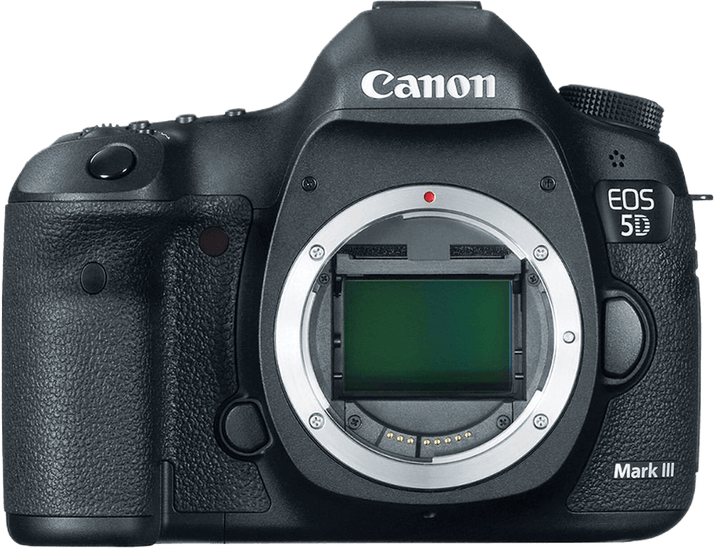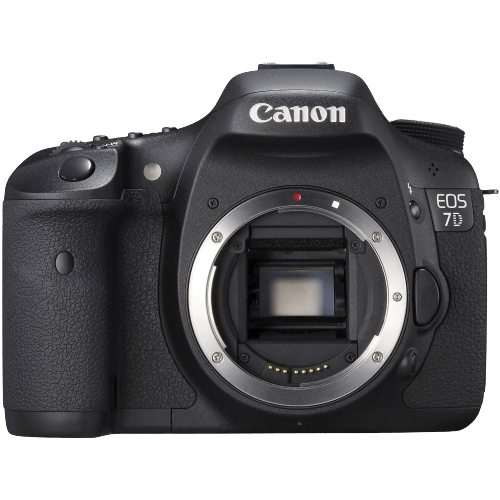Canon EOS 5D Mark III vs EOS 7D Comparison
Canon EOS 5D Mark III

Canon EOS 7D

The Canon EOS 5D Mark III outperforms the Canon EOS 7D with a score of 65/100 compared to 45/100. Both cameras share the DSLR type and were released in 2012 and 2009, respectively. They also have similar sizes, with the 5D Mark III measuring 152 x 116 x 76mm and weighing 950g, and the 7D at 148 x 111 x 74mm and 860g.
The 5D Mark III is better due to its higher score, which reflects its superior features and performance. It was launched at a higher price of $3499, indicating a more advanced camera compared to the 7D’s $1974 launch price.
On the other hand, the 7D has a lighter weight and slightly smaller size, making it easier to carry around. However, this advantage does not outweigh the benefits of the 5D Mark III’s higher score and overall better performance.
Considering the differences in scores, features, and prices, the Canon EOS 5D Mark III is the clear winner in this comparison, offering enhanced performance and capabilities. The Canon EOS 7D, while more portable, cannot match the 5D Mark III’s merit as a superior camera.
Canon 5D Mark III vs 7D Overview and Optics
The Canon EOS 5D Mark III outperforms the Canon EOS 7D in optics, with a score of 67/100 compared to the 7D’s 43/100. Both cameras share some common specifications, such as having a CMOS sensor, no image stabilization, and being compatible with Canon’s EF lens mount system.
The 5D Mark III has several advantages over the 7D, including a higher megapixel count of 22.3 compared to the 7D’s 18 megapixels. This results in a better resolution and image quality. Additionally, the 5D Mark III features a full-frame sensor, which offers better low-light performance and a wider field of view compared to the 7D’s APS-C sensor. The 5D Mark III also has a higher DXOMARK score of 81 for its sensor, indicating better overall image quality.
On the other hand, the Canon EOS 7D has a faster shooting speed of 8 frames per second compared to the 5D Mark III’s 6 frames per second. This makes the 7D more suitable for action photography and capturing fast-moving subjects. However, this advantage may not be significant for many photographers, especially those who prioritize image quality over speed.
In terms of optics, the Canon EOS 5D Mark III is the clear winner with its higher score, better image quality, and full-frame sensor. The Canon EOS 7D may have a faster shooting speed, but this advantage is not enough to outweigh the benefits offered by the 5D Mark III. Therefore, for those seeking superior optics and image quality, the Canon EOS 5D Mark III is the better choice.
Canon EOS 5D Mark III vs EOS 7D Video Performance
The Canon EOS 5D Mark III emerges as the superior camera in terms of video capabilities, scoring 56/100 compared to the Canon EOS 7D’s score of 43/100. Both cameras share some common specifications, such as Full HD max video resolution and 1920 x 1080 max video dimensions. Additionally, neither camera has built-in time-lapse functionality.
The 5D Mark III outperforms the 7D with its higher max video frame rate of 60fps, as opposed to the 7D’s 30fps. This higher frame rate allows for smoother video playback and better slow-motion effects, making the 5D Mark III a more suitable choice for videographers who require these features.
Despite its lower score, the Canon EOS 7D has a slight advantage in max video dimensions, offering 1921 x 1080 compared to the 5D Mark III’s 1920 x 1080. However, this difference is negligible and unlikely to impact the overall video quality in a significant way.
Taking these factors into account, the Canon EOS 5D Mark III is the better camera for video capabilities due to its higher frame rate, providing smoother video playback and improved slow-motion effects. The Canon EOS 7D, while having a marginally larger max video dimension, does not offer any significant advantages over the 5D Mark III in terms of video capabilities. Thus, for those prioritizing video performance, the Canon EOS 5D Mark III is the recommended choice.
Canon 5D Mark III vs 7D Features and Benefits
The Canon EOS 5D Mark III outperforms the Canon EOS 7D with a feature score of 59/100 compared to the 7D’s 54/100. Both cameras share some common specifications, such as the lack of a touchscreen, flip screen, GPS, Wi-Fi, and Bluetooth.
The 5D Mark III’s superiority is evident in its screen size and resolution. The camera boasts a 3.2-inch screen, which is larger than the 7D’s 3-inch screen. In addition, the screen resolution on the 5D Mark III is 1,040,000 dots, significantly higher than the 7D’s 920,000 dots. These factors contribute to the 5D Mark III’s higher feature score and make it a better choice for photographers who prioritize a larger and clearer screen.
On the other hand, the Canon EOS 7D does not have any specific advantages over the 5D Mark III in terms of features. The lower feature score reflects this lack of standout characteristics. However, it is worth noting that both cameras have similar specifications in many aspects, so the 7D may still be a suitable option for those who do not place a high priority on screen size and resolution.
Taking these factors into consideration, the Canon EOS 5D Mark III is the clear winner in this comparison due to its larger screen size and higher screen resolution. The Canon EOS 7D, while not offering any specific advantages, remains a viable alternative for those who find the shared specifications sufficient for their needs.
Canon EOS 5D Mark III vs EOS 7D Storage and Battery
The Canon EOS 5D Mark III outperforms the Canon EOS 7D in storage and battery with a score of 76/100, a significant 41-point lead over the 7D’s 35/100. Both cameras use the same LP-E6 battery type and do not offer USB charging. However, the 5D Mark III has a longer battery life, providing 950 shots compared to the 7D’s 800 shots.
In terms of storage, the 5D Mark III is superior with two memory card slots, accepting SD/SDHC/SDXC, Compact Flash, and UDMA cards. In contrast, the 7D has only one memory card slot, compatible with Compact Flash (Type I or II), UDMA, and Microdrive cards. This difference in storage capacity and versatility gives the 5D Mark III an edge over its counterpart.
The only advantage the 7D has over the 5D Mark III in this comparison is its lower price point. However, considering the significant difference in storage and battery performance, the Canon EOS 5D Mark III justifies its higher cost and proves to be the superior choice between the two cameras.
Canon EOS 5D Mark III vs EOS 7D – Our Verdict
Are you still undecided about which camera is right for you? Have a look at these popular comparisons that feature the Canon EOS 5D Mark III or the Canon EOS 7D:

